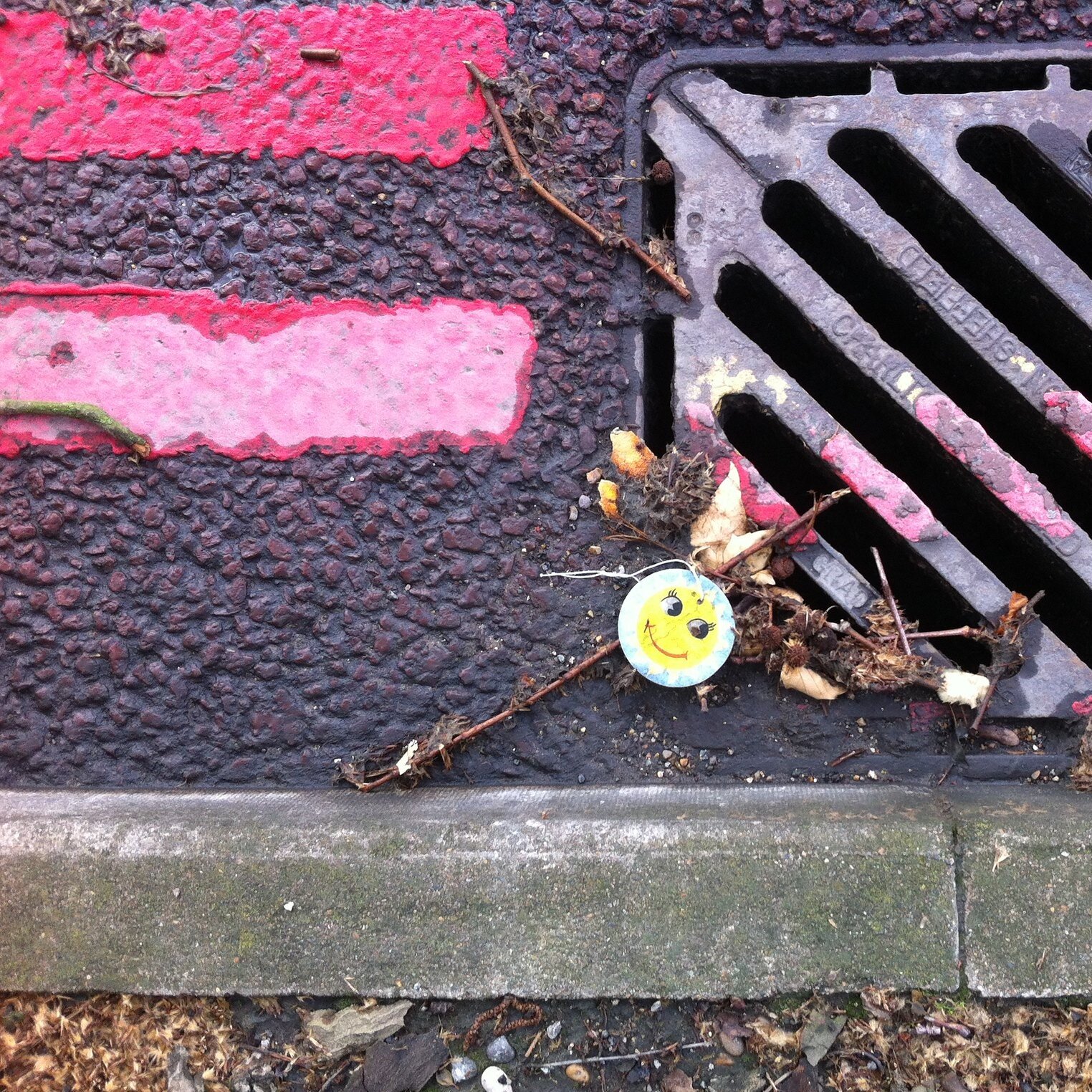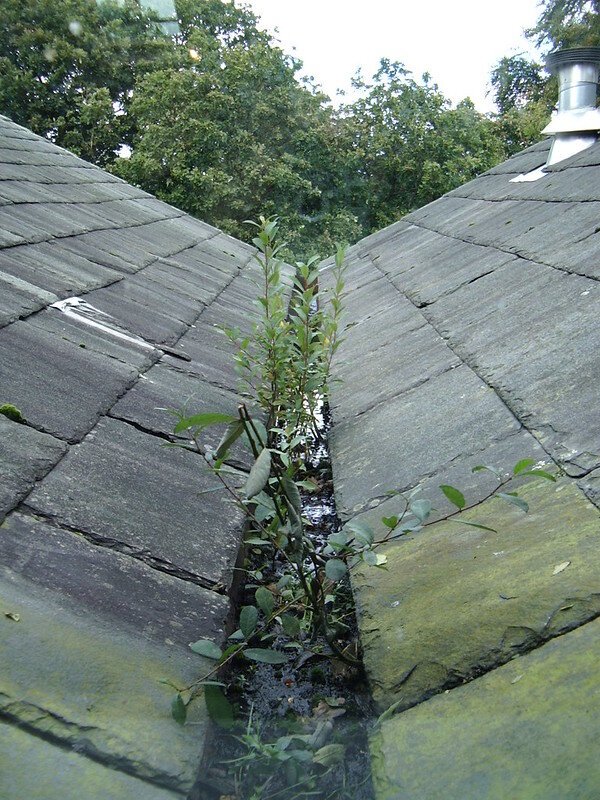10X10: City Gutter
Gutters can refer to the curbside drainage channels that lead into storm drains, to the metal or plastic troughs that line some rooftops, or really to any low area designed to move water from one place to another.
They are, by design, fairly ordinary examples of human engineering. But look closer and you’ll find extraordinary objects and ecosystems hidden within.
Starting at the curb and working our way up, we spend this episode learning about which creatures take advantage of our waste-water systems; find evidence of extraterrestrial travel on our rooftops; and we look at how gutters function…or don’t… for the very species that designed them.
Featuring Ken Belt, Carlos Goller, Menno Schilthuizen, Doug Hartman, Matthew Genge, Fushcia Hoover, and Joyce Hwang.
Love Outside/In? You’ll love the Outside/In newsletter! Sign-up here.
Highways & Microbes
Credit Fotologic, https://bit.ly/3ethbI2
If you look at a detailed geographic map of streams and rivers, you might notice it looks a little like a roadmap. And in a way, it is. Rivers aren’t just homes for aquatic ecosystems. They’re highways for all sorts of animal life.
Human-engineered water systems, made up of culverts, sewers and pipes, function in the same way.
Ken Belt, is a retired engineer and ecologist who worked for two decades in Baltimore’s Department of Public Works. He says growing up in Baltimore, he’d be sitting on his front porch and out of nowhere, he’d see a possum.
“And we’d think, how did that thing get here? And it’s because they used the storm drains to get from here to there. Coyotes do the same thing. I would go into storm drains and I would find scat from raccoons. Hopefully they’re smart enough to get the hell out when they start hearing rumblings of flow.”
Ken says that gutters and storm drains aren’t just like streams - they are streams. Intermittent headwaters that can change suddenly from dry bed to raging river and back again.
In 2015, a team of researchers took to the streets of Paris to look for life in the gutters. They split up among the city's 20 districts, armed with equipment for collecting water, and toothbrushes for scraping up biofilms: microbial cities that form slimy carpets in and around the gutters.
What they found were nearly 5,782 different OTUs, or Operational Taxonomic Units: genetic samples unique enough to operate as a loose surrogate for species.
That’s nearly 6,000 different kinds of microbes.
There was algae, photosynthesizing sunlight as it streamed into the city streets. Bacteria. A tiny, freshwater species of sponge. Fungi. A species of mollusk.
The gutters of Paris and other cities are home to an invisible biome, a complex ecosystem and food web. One that may be functioning a little like the one in wild streams: cleaning and filtering water, removing carbon from the air and producing oxygen. Perhaps, even “pooping” precious metals.
Carlos Goller is a microbiologist at North Carolina State University, and an assistant professor who likes to search for microbes in unlikely places.
He’s sent students out looking for microbes in water fountains on campus, on kitchen sinks, and in rooftop gutters. But there is one microbe that Carlos turns to more than others: Delftia acidovorans.
“It has this unique ability,” Carlos says, “when exposed to liquid gold, to make a little protein that takes liquid gold and clumps it together into gold nano-particles. And I always describe it as a gold-pooping microbe.”
Delftia has been found in common places like garden soil, and very uncommon places as well: like the water filter on the International Space Station.
And, no surprise, Carlos’s students have found it in the downspouts of the gutters on the buildings at North Carolina State University.
Now before you go ahead and start trying to test your own gutters for Delftia, this isn’t a feasible get rich quick scheme. These nano-nuggets don’t add up to much.
Measuring in length around 20 to 80 billionths of a meter, nano particles of gold are so tiny they don’t yet behave like metal, exhibiting different shapes, colors, and properties than the gold you’ll find in a jewelry store.
Still, Carlos says, the microbe has its uses.
“It’s a really excellent way of looking at the understudied microbes that we label as ubiquitous that are doing fantastic things for us that we don’t even know about.”
Extreme Environments
Rooftop gutters, like the ones that line our curbs, are extreme environments: Prone to bake in the sun one hot summer day, only to flush with water moments later during an afternoon storm.
But that’s only when they’re working. When gutters break or get clogged, they can become rich habitats.
Nick Bramhall, https://bit.ly/38vobR2
Doug Hartman has owned Covenant Wildlife Management, based in Birmingham, Alabama, for 34 years. Throughout his career, he has seen it all. Gutters tend to operate like highways for small mammals like roof rats and squirrels.
“They go into the gutters because the gutter is like a feeding trough. You know it’s collecting any nuts and seeds that have fallen off the roof and collected in the gutter, and then you’ve got low spots that are collecting water in the gutter. And then they find that opening, getting into the soffit, they’ve got nice insulation they can use to stay warm, to stay dry. And all they’ve got to do is go onto their front porch and they’ve got food and water for them.”
It’s a domino effect. Once you’ve got nuts and leaves clogging your gutter, it’s only a matter of time before you’ll start a small forest.
“You’ll see pine trees growing out of gutters, oak trees,” Doug says.
And once you’ve got plants and mammals, next come predators like cats or snakes.
“So I’ve watched [snakes] crawl right up the side of a brick house and over the gutter and into the attic, and then I get into the attic and they’re up on a louvre vent chowing down on bats or something like that.”
Space Dust
A gutter is a product - and a receptacle if you will - of its surroundings. It fills up with anything and everything that can fall or climb into it.
But the higher the building there isn’t much falling into the gutters of a city’s tallest buildings: just rain and snow, bird droppings, and wayward particles of pollution carried on the wind.
And one more thing: space dust, technically called ‘micro-meteorites.’
Micro-meteorites are miniature space rocks just two to three hundred microns across, a little bit smaller than the width of the human hair. Blown up, they look like otherworldly marbles, or the metallic shells of alien mollusks.
Matthew Genge is a planetary scientist at Imperial College in London.
“Some micrometeorites melt as they come through the atmosphere because of the friction with the air as they come through, they enter the atmosphere at such high speeds they form tiny little droplets.”
Photo credit: (C) Jan Braly Kihle & Jon Larsen
Micrometeorites are both incredibly common but also exceedingly hard to locate. They fall constantly onto the surface of the earth at a rate of 6 particles per square meter per year. Unfortunately, those particles are mixed with millions of other particles of dust and pollution.
That’s why scientists who study micrometeorites tend to collect them in Antarctica, where they're easier to isolate. But one man was determined to find them in the chaos of the city.
“It all began when I got contacted by a chap called Jon Larsen,” Matthew says, “who told me he had been collecting micrometeorites on his roof.”
Jon Larsen, amateur astronomer, painter, and acclaimed jazz guitarist (he played with Chet Baker) was collecting grime from rooftops and rooftop gutters in search of dust from outer space.
Matthew was skeptical.
“In the end he sent me a photograph, and I thought, you know… that really does look like a micrometeorite. And it was.”
Today, Jon and Matthew have published a number of scientific articles, and Jon has released a book detailing how to find urban micrometeorites called “In Search of Stardust.”
The project has inspired hundreds of hobbyists around the world, who use magnets and microscopes to find extraterrestrial rocks just about anywhere.
Pollutants
Rain that falls in a forest may soak into the soil and slowly filter through the earth for days, years, millennia even, before popping out as a spring or seeping into the bed of a river.
But in a concrete waterway, everything is streamlined, integrated, and fast. And that means there is a lot of stuff being collected as water flows downstream.
Space dust, yes, but also salt, oil and antifreeze from vehicles leaking into roads, animal feces, fertilizer, and other pollutants and pharmaceuticals as well.
“They’re showing up in the water,” says Dr. Fushcia Hoover, a postdoc researcher at the National Socio-Environmental Synthesis Center in Annapolis, Maryland.
“Folks are trying to learn and discover what the impacts are on ecosystem health but also on human health.
In some cases, storm water runoff from gutters is being deposited directly into larger water bodies. But older cities — especially on the East Coast — often rely, in part, on combined systems that mix storm water with waste water.
In cases like these, all of that water and sewage flows into a treatment facility before being dumped back into the water cycle. But these systems were only built to handle so much flow. And because cities are home to more people, bigger storms, and more surface area than they were when the sewers were designed these systems have broken down.
Let’s use New York City as an example. When overloaded, combined sewer systems there dump overflow directly into places like the Bronx River, the East River, the Hudson, Coney Island Creek, and Jamaica Bay.
“You can kind of think of it like the extra drainage hole in your bathtub,” Dr. Hoover says. “Where the water is only allowed to get so high and then it starts running back into the drain so that you can't have an overflow event.
In 2016, New York City had 100 days where they dumped raw sewage directly into waterways. And this is happening in cities all over the United States every week, every month, every year.
[See a United States map of cities with Combined Sewer Systems.]
In areas where pipes are connected directly to storm water systems, rainfall can also lead to flooded streets and basements, leading to effluent exposure and health hazard risks in low-lying neighborhoods.
This is obviously a problem during events like Hurricane Katrina in 2005, but the harms aren’t reserved for occasional disasters. They’re regular; they’re getting more common; and they’re disproportionately affecting marginalized communities that historically have pushed into low-lying urban areas.
“Which is for me why it’s so important to think about storm water through an environmental justice lens,” Dr. Hoover says. “The challenge is being able to have systems that function the way that they should for everybody.”
Credits
Outside/In was produced this week by Taylor Quimby, with Justine Paradis and Sam Evans-Brown
Erika Janik is our executive producer.
Our theme music is by Breakmaster Cylinder.
Additional music by Blue Dot Sessions, Podington Bear, and Hot Club of Norway.
If you’ve got a question for our Ask Sam hotline, give us a call! We’re always looking for rabbit holes to dive down into. Leave us a voicemail at: 1-844-GO-OTTER (844-466-8837). Don’t forget to leave a number so we can call you back.


